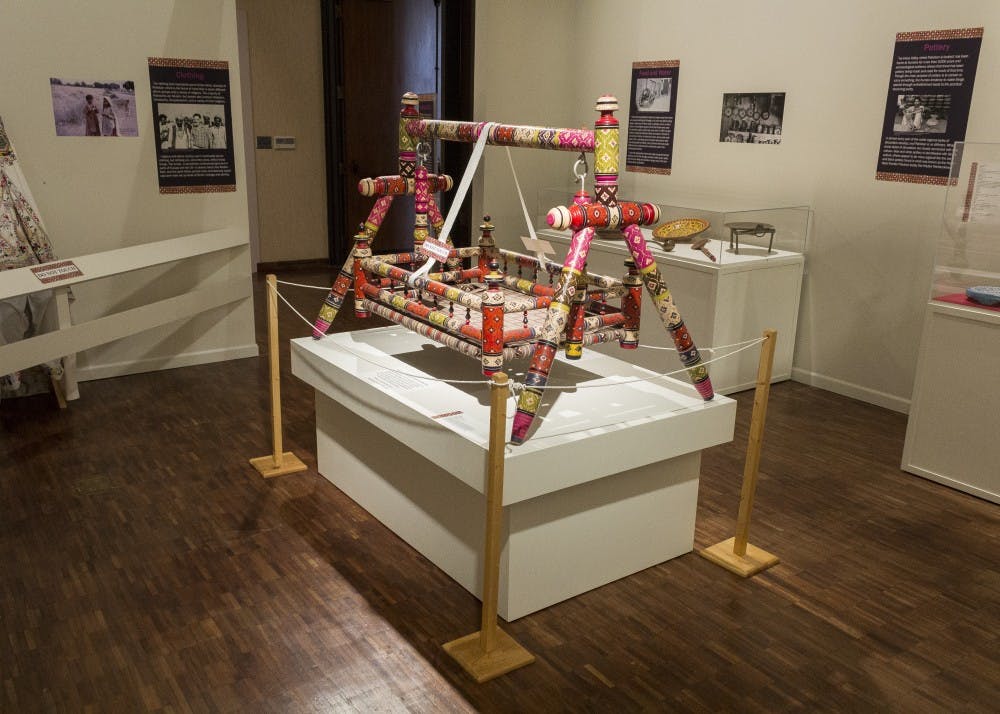The world is full of people with distinct cultural and habitual differences, but a current exhibit at the Mathers Museum of World Cultures strives to prove that all humans are the same.
“Maybe how we do things, how we see things, how we look are different, but at the most basic level all people are the same,” Mathers Manager Matthew Sieber said.
Mathers installed the exhibit, "A Snapshot of Pakistan, 1965: The Madge Minton Collection," in the beginning of the fall semester. The exhibit will stay until Dec. 16, 2018. Objects on display include tools used by a variety of Pakistani people to satisfy basic needs that all humans share.
These items fall under different categories: clothing, jewelry, pottery and food and water.
“I think it provides a new perspective, and it helps people think about the fact that even though these objects may not look like the things you have in your own home or in your jewelry box or in your wardrobe, they serve the same functions and they help us understand the commonalities that all humans share,” said Sarah Hatcher, the chief curator for this exhibit.
Hatcher is also the head of programs and education for the museum.
A pilot named Madge Minton collected the artifacts in the exhibit and brought them to the United States in the 1960s. Minton was a pilot and the wife of Sherman Minton, a doctor with a love of herpetology, the study of amphibians.
Hatcher said Minton and her husband traveled to Pakistan on multiple occasions before the director of Mathers gave Minton $500 to collect and bring home artifacts in 1965.
The couple went to Pakistan in the 1950s and then returned in the 1960s, so Minton knew what artifacts were available and where she could get them.
"In a few cases she literally bought shirts off of people’s backs, but a lot of the stuff was purchased in a marketplace," Hatcher said.
Because of the couple’s fascination with snakes, many of the artifacts on display were collected from the Jogi Snake Charmers of the Sindh region. But both Hatcher and Sieber explained that variety was vital to the overall message of this exhibit.
Hatcher said she wanted to showcase the diversity of Pakistani cultures.
“I wanted to make sure that it wasn’t just Jogi or just Sindhi people represented, but we have a lot of different locations and a lot of different people present in the exhibit,” Hatcher said.
In the center of the exhibit sits a cradle used by the people of Pakistan as a child’s bed. The cradle is an example of lacquer work known as Jandi, where wood is shaped and crafted with layers of bright colors and intricate designs, and is a piece Sieber and Hatcher both greatly admire.
Despite the Pakistani influences, Sieber stressed each object is a tool used to fulfill a need every human shares. The exhibit was designed to place these universal needs on display.
Sieber said although it is difficult to represent all needs with the limited artifacts on hand, the museum did its best to show visitors that everyone has these and is similar in this way.
"We’re all in the same boat,” Sieber said.




